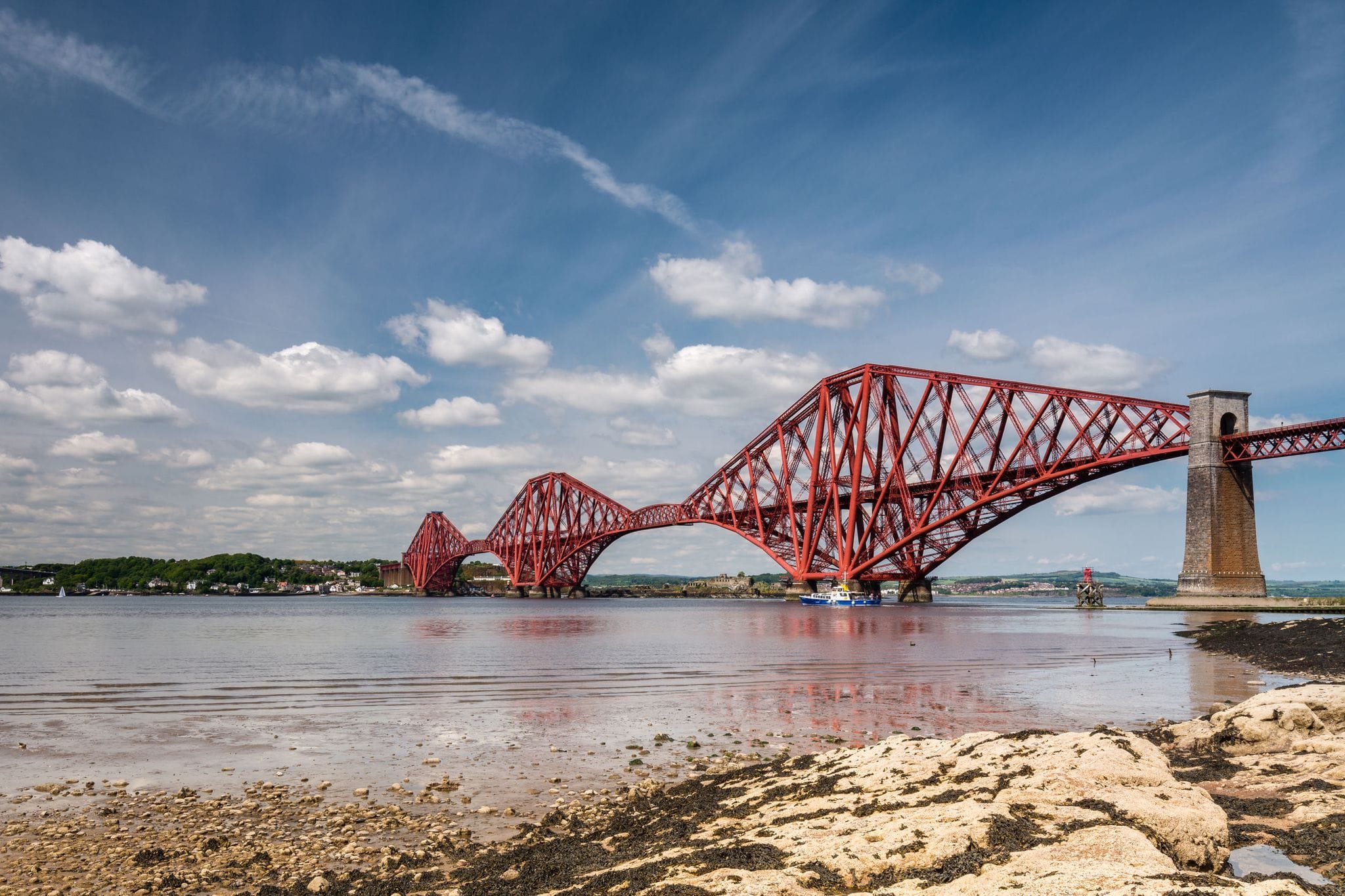
Route Overview
Where is the Fife Coastal Path?
Bonnie Scotland! The Fife Coastal Path is a walking route that stretches 187 Km (116 miles) along the Scottish east coast, from the Firth of Forth in the south to the Firth of Tay in the north. The coastal hiking trail is well signposted and offers stunning views of the coastline, as well as access to many historic sites, nature reserves, and picturesque fishing villages.
Why should you walk the Fife Coastal Path?
The Fife Region is a land of captivating beauty and awe-inspiring landscapes. Meandering between long sandy beaches and quaint rustic fishing villages, the Scottish hiking trail is a walkers dream. Picturesque farmland, enchanting woodland and dramatic coastal views make every section a sight to behold – you definitely don’t want to forget the camera on this hike. If you want an authentic hike that’s off the beaten path in Scotland then the Fife Coastal Path is for you.
This well-maintained trail winds through picturesque landscapes, including sandy beaches, quaint villages, and lush woodlands. Ideal for hikers of all levels, the path is relatively short and easy to navigate, with clear signposts and convenient access to amenities. While mostly flat and straightforward, there are occasional rugged sections along rocky beaches and clifftops, adding a touch of excitement to the journey. Whether you’re a seasoned trekker or a casual walker, the Fife Coastal Path promises a tranquil yet rewarding adventure through some of Scotland’s most enchanting coastal scenery.
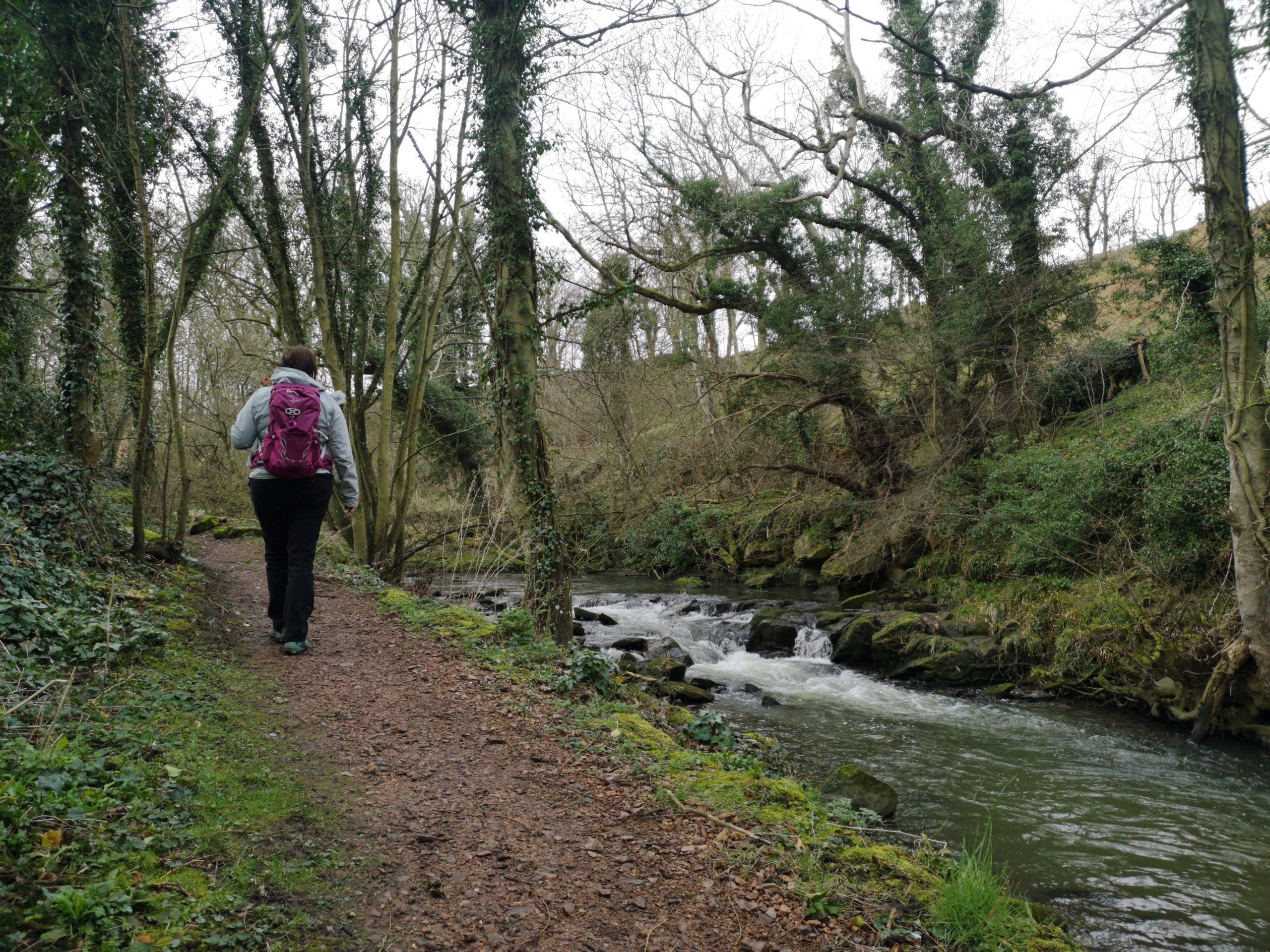
When is the best time to walk the Fife Coastal Path?
Spring
As nature re-awakens from its wintry slumber, life is once again restored along the Fife Coastal Path. Wildflowers bloom, emerald cliffs embrace the azure sea, and the days grow longer, allowing for an atmospheric hike against a breathtaking backdrop. In spring, temperatures begin to rise, reaching an average of 9-14°C (48.2-57.2°F), while rainfall begins to diminish, providing more opportunities to enjoy hiking on the Fife Coastal Path.
Summer
The Fife Region basks in the warmth of the sun, offering an invitation to explore its coastal wonders. Lush greenery covers the land, providing a vibrant backdrop for your hiking adventures. During summer, temperatures climb to a pleasant 16-19°C (61-66°F), making it the ideal time to hike. Rainfall remains relatively low, allowing for long days of exploration and discovery!
Autumn
Nature paints a masterpiece as the landscape transforms into a tapestry of autumnal colours. The leaves swap their summer greens for warm, earthy colours. Temperatures gradually cool during autumn, ranging from 9-17°C (48-63°F), while occasional showers enhance the lushness of the landscape.
Winter
During winter, temperatures hover around 2-6°C (36-43°F). Due to this and the fact that a lot of the accommodations are closed, it is only recommended that very experienced hikers take on Fife Coastal Path during this time of year. There is a high likelihood of snowfall during these months, making sections of the trail treacherous and at times impassible.
With all that said, the weather in the UK is extremely unpredictable. The Hillwalk Tours hiking season is from March to October, during which time we are happy to help you organise your hiking trip.
How long does it take to hike the Fife Coastal Path?
The original Bridge to Bridge trail is a 130km (80 miles) hike, beginning at the towering Forth Railway Bridge in North Queensferry, and stretching all the way to the Tay Bridge at Newport on Tay. In 2011 and 2012, two extensions were added, one on either side of that path. The length of the walking route now totals at 187km (116m), stretching from Kincardine to Newburgh.
Tour Route
Types of Trails
Choosing the right hiking tour for you can be, at times, tricky. It is always important to consider your own physical capability and comfort levels.
For example, at Hillwalk Tours, we have grouped each trail route we offer into three categories depending on personal preference and fitness levels. These are – gentle, moderate, and challenging. Each of these categories, depending on the destination, will include anything from 4 to 13-day itineraries, with customers given the option to add rest days where they see fit.
Our gentle hikes are perfectly suited for those who would consider themselves as a part-time hiker who enjoys taking photos and meeting locals while taking in the spectacular scenery. Our moderate hikes will suit people who are used to regular exercise and appreciate the opportunity of covering plenty of ground each day without going beyond their limits. Finally, our challenging hikes are for hikers who look to set off early in the morning and not stop until they have reached their destination.
With regards to our Fife Coastal Path trail, we offer Gentle, Moderate and Challenging hikes. Each of these hiking categories cover the following average hiking distance and time each day:
Gentle: 13-16km or 8-10 miles and between 4-5 hours per day
Moderate: 16-25km or 10-16 miles and between 4-7 hours per day
Challenging: 26-30km or 16-19 miles and between 5-8 hours per day
Hillwalk Tours Guide Notes
If you decide to walk the trail with Hillwalk Tours, you will receive a detailed walking pack once you have fully booked your hiking holiday. This walking pack will include detailed Ordnance Survey (OS) maps and unique route notes and walking directions written and constantly updated by our route development team. By personally walking each trail and creating our own detailed route notes, it allows us to provide more itineraries, route options and alternatives than what you will typically find across generic guidebooks. It also includes GPS tracks meaning you will never have to worry about getting lost.
Starting and Finishing Point
Beginning at the Firth of Forth and ending at the Firth of Tay, the Fife Coastal Path is a fantastic stretch of coastal walking and a fine way to experience the culture and landscape of Scotland. This remarkable trail takes you on a journey of discovery, immersing you in breathtaking beauty, captivating history, and the enchanting allure of Scotland’s coastal wonders.
The trail meanders through charming harbors, including the captivating village of Crail. Its charming cottages and inviting atmosphere harken back to a bygone era. Let the sound of crashing waves and the salty sea air invigorate your senses as you stroll along the shoreline, taking in the panoramic views and marveling at the coastal landscapes.
Continuing your journey, the Fife Coastal Path leads you to the iconic town of St. Andrews. Here, you can immerse yourself in the rich tapestry of Scottish heritage. St. Andrews is renowned as the “home of golf”, boasting world-famous courses that have witnessed legendary moments in the sport’s history. Explore the ruins of St. Andrews Castle, once a stronghold of Scottish nobility, and wander through the remnants of St. Andrews Cathedral, which was once one of Scotland’s grandest religious structures. The town’s vibrant atmosphere, quaint streets, and the presence of Scotland’s oldest university add to its unique charm. Lose yourself in the town’s captivating blend of history, academia, and golfing tradition, and feel the timeless spirit that resonates within its ancient walls.
Finally, as you near the end of your journey, the Firth of Tay welcomes you with its tranquil embrace. Gaze across the serene waters, savouring the sense of accomplishment and the memories created along the trail. Reflect on the diverse landscapes, from rugged cliffs to sandy beaches and lush woodlands to panoramic vistas.
Sample Fife Coastal Path Itineraries
The following are examples of Hillwalk Tours Gentle, Moderate and Challenging itineraries of hiking the Fife Coastal Path.
Gentle 6-Day
Day 1: Arrival in Elie
Day 2: Elie to Crail (10.5 Miles / 17 Km)
Day 3: Crail to Kingsbarns 6.5 Miles / 10 Km)
Day 4: Kingsbarns to St Andrews (8 Miles / 13 Km)
Day 5: Leuchars to Tayport (9.5 Miles / 15 Km)
Day 6: Departure from St Andrews
Challenging 7-Day
Day 1: Arrival in North Queensferry
Day 2: North Queensferry to Kirkcaldy (17.5 Miles / 28 Km)
Day 3: Kirkcaldy to Lower Largo (12.5 Miles / 20 Km)
Day 4: Lower Largo to Crail (17 Miles / 27 Km)
Day 5: Crail to St Andrews (14.5 Miles / 23 Km)
Day 6: Leuchars to Newport-on-Tay (11 Miles / 18 Km)
Day 7: Departure from St. Andrews
Moderate 8-Day
Day 1: Arrival in North Queensferry
Day 2: North Queensferry to Burntisland (12 Miles / 19 Km)
Day 3: Burntisland/Kinghorn to Leven (16 or 13 Miles / 26 or 21 Km)
Day 4: Leven to Anstruther (15.5 Miles / 25 Km)
Day 5: Anstruther to Kingsbarns (10.5 Miles / 16.5 Km)
Day 6: Kingsbarns to St Andrews (8 Miles / 13 Km)
Day 7: Leuchars to Newport-on-Tay (11 Miles / 18 Km)
Day 8: Departure from St Andrews
Gentle 10-Day
Day 1: Arrival in North Queensferry
Day 2: North Queensferry to Aberdour (8 Miles / 13 Km)
Day 3: Aberdour to Kirkcaldy (9.5 Miles / 15 Km)
Day 4: Kirkcaldy to Leven (10.5 Miles / 17 Km)
Day 5: Leven to Elie 9.5 Miles / 15 Km
Day 6: Elie to Crail (10.5 Miles / 17 Km)
Day 7: Crail to Kingsbarns (6 Miles / 10 Km)
Day 8: Kingsbarns to St Andrews (8 Miles / 13 Km)
Day 9: Leuchars to Tayport (9.5 Miles / 15 Km)
Day 10: Departure from St. Andrews
Hillwalk Tours Fife Coastal Path Map
The Fife Coastal Path Path Terrain
Waymarking
The Fife Coastal Path is well waymarked. Throughout the path, you’ll find clear and visible signage, including distinctive markers and directional arrows. These waymarks guide you along the designated route, ensuring that you stay on track and don’t miss any of the stunning coastal views or important landmarks along the way.
Difficulty of the Fife Coastal Path
The long distance hiking trail in Scotland is quite beginner friendly, so it’s ideal for first time hikers and those who like to take their time and see the sights. That said, the Fife Coastal Path is is suitable for walkers of all abilities, with some sections being more challenging than others.
At Hillwalk Tours, we offer three tour grading levels (gentle, moderate and challenging) depending on the balance of physical challenge and comfort level that you require. Within these levels, you can choose between 5 to 10-day hiking tours to complete the trail. All you have to decide is how many kilometres / miles you would like to walk per day and we take care of the rest!
Sights & Attractions on the Fife Coastal Path

A bridge to bridge trail
The Fife Coastal Path offers an enchanting journey through Scotland’s picturesque landscapes, renowned not only for its stunning coastal views but also for its captivating array of bridges. Beginning in the historic village of North Queensferry, where the iconic Forth Bridge stands proudly as a symbol of engineering prowess, the path takes hikers on a remarkable traverse of bridges.

First, there’s the world-renowned Forth Bridge, an architectural marvel that spans the mighty Firth of Forth. Its vibrant red hue and intricate lattice design are a testament to human ingenuity. Then, as walkers progress along the trail, they encounter the modern marvel that is the Queensferry Crossing. This sleek, cable-stayed bridge offers a striking contrast to its historic neighbor, providing essential road access across the estuary.
St. Bridget’s Kirk
St. Bridget’s Kirk is a historic church located between the coastal towns of Dalgety Bay and Aberdour on the shores of the Firth of Forth. The church was first noted in historic records in 1178 and is thought to have been constructed around that time. After the Protestant Reformation of 1560, St. Bridget’s Kirk was expanded with new feature. The grounds of the church contain an extensive area of grass with crypts and carved gravestones of historic figures from the local area. By 1830, the main coastal road was moved inland and this drew people away from using the church as a place of worship. A new church was built inland and the remains of St. Bridget’s were left as a lasting memory of this iconic medieval church.
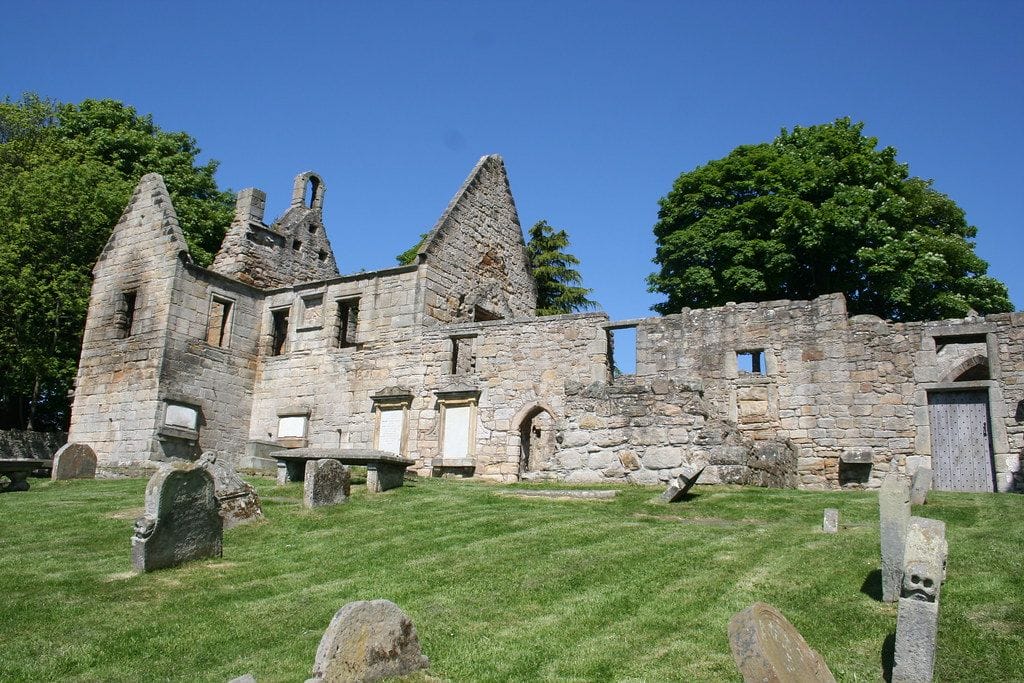
Kinghorn Harbour
Kinghorn Harbour is a hidden gem located along the Fife Coastal Path. It is a picturesque spot nestled in the shadow of cliffs that offers several footpaths leading to spectacular views of the beach and out across the Firth of Forth towards Edinburgh & The Lothians. It’s a perfect place to relax and unwind while enjoying the stunning scenery.
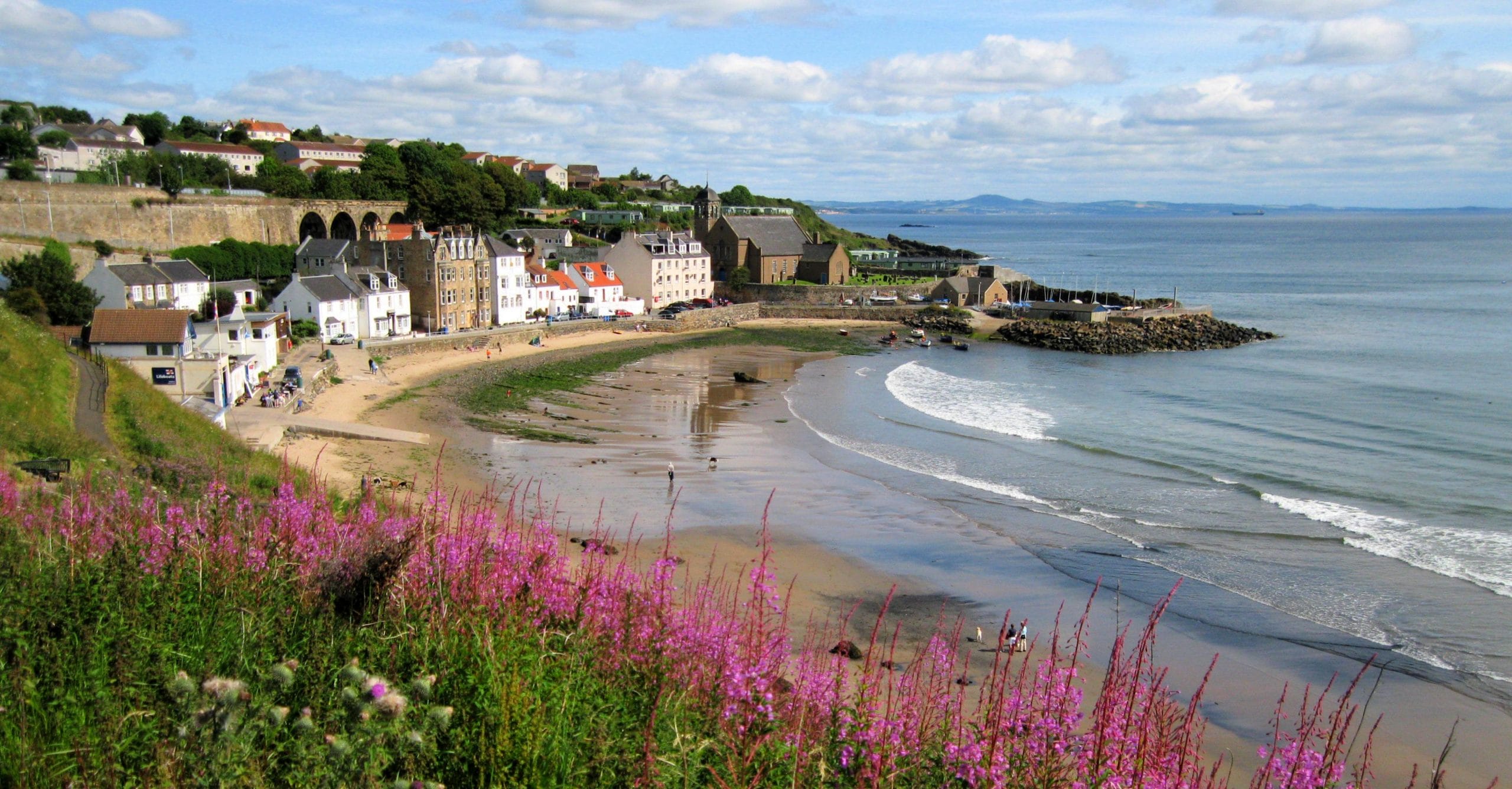
Wemyss Caves
Carved by the ancient sea, the Wemyss Caves hold secrets of the past etched into their sandstone walls. Over 8,000 years of history are preserved within these mystical chambers. From Bronze Age artifacts to the enigmatic symbols of the Picts, the caves bear witness to the enduring human presence along the Fife coastline. The site contains the largest collection of Pictish inscribed symbols in one place. Among these hallowed grounds, the haunting ruins of Macduff’s Castle stand as a poignant reminder of Scotland’s turbulent past.
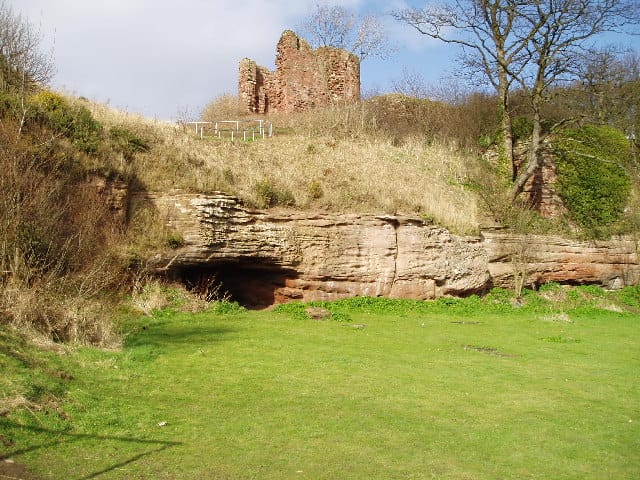
Elie Chain Walk
If you fancy increasing the difficulty of your walk, why not try the Elie Chain Walk? A Fife oddity – a series of chains fixed along the coast. Above crashing waves and with views across to Edinburgh, you can climb, scramble and coasteer along the Fife cliffs. Beginning at North Queensferry and ending at the St Andrews, the chain walk is sure to add a bit of excitement to your hike.
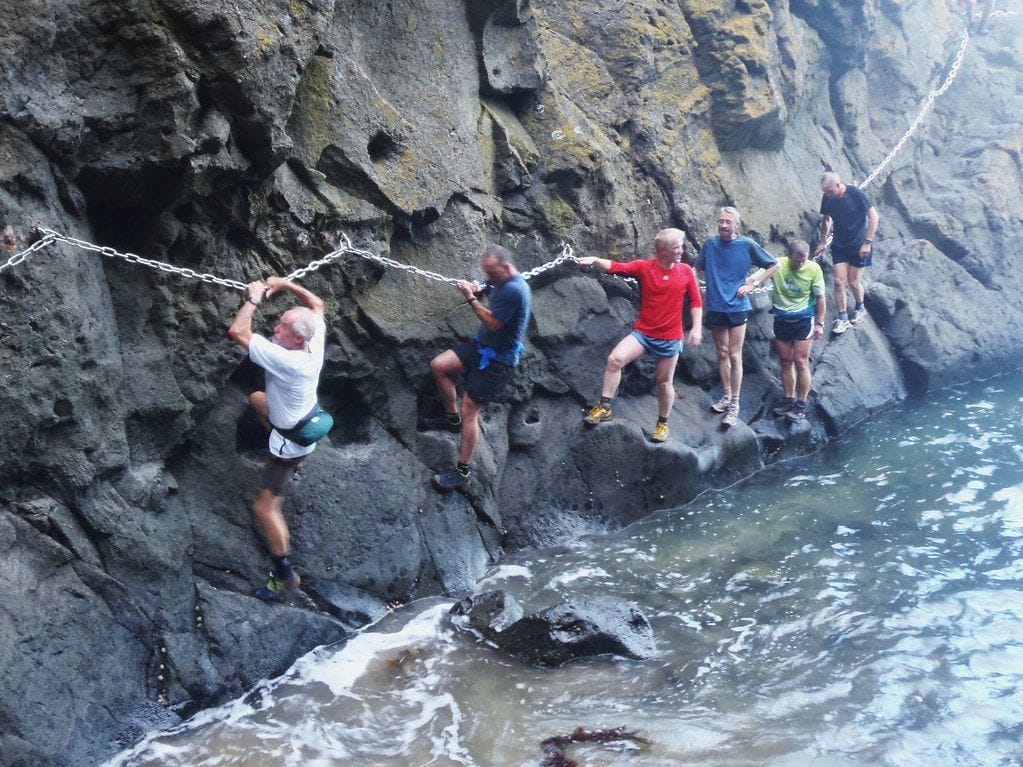
Newark Castle
Majestically perched on the edge of the shimmering waters, this ancient ruin exudes an undeniable charm that captivates all who wander its worn corridors. Built in the 15th century, Newark Castle stands proudly along the Fife Coastal Path, its upper floors now in ruins. But, beneath the surface, lie the enduring vaulted cellars. Newark Castle stands as a silent witness to centuries of stories, a testament to the enduring allure of Scotland’s rich heritage.
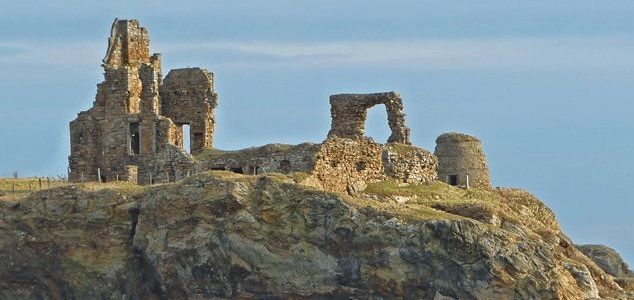
St. Andrews
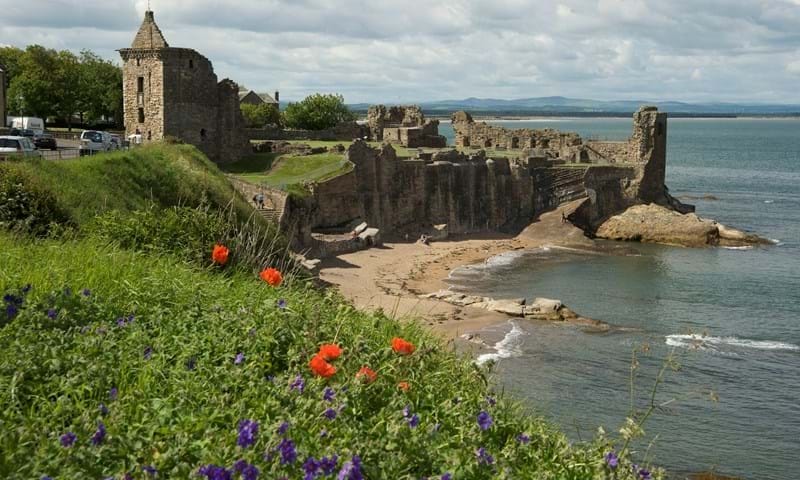
St. Andrews is a quaint, coastal town with some great sights and a fascinating and varied history. The town is particularly known for it’s university that educates the royal family and other affluent members of society in the United Kingdom, the University of St. Andrew’s, which is the third oldest English speaking university in the world. St. Andrew’s cathedral is a magnificent ruin, dating back to the 12th century. It was the centre of the Medieval Catholic Church in Scotland. St. Andrews Castle is another marvelous and enchanting ruin from the same period that suffered extensive damage during the Wars of Scottish Independence (1296-1356). The castle was restored in the mid 16th century, before being abandoned and left to fall into a state of disrepair again at the end of the century.

St Andrews is also known as the “home of golf” because of The Royal and Ancient Golf Club of St Andrews. It was founded in 1754 and until 2004 exercised legislative authority over the game worldwide (except in the United States and Mexico). The Old Course of St Andrews Links (acquired by the town in 1894) is the most frequent venue for The Open Championship, the oldest of golf‘s four major championships.
Constantine’s Cave
Hidden amidst the mystical landscapes of Balcomie, Constantine’s Cave srands as a sanctuary to the legends of old. It is said that Causantín mac Cináeda, the king of the Picts (862-887) died here. Here, the entwined threads of history and mythoology weave together, inviting seekers to delve into Scotland’s captivating past.
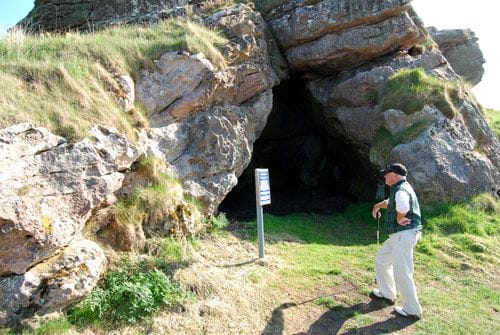
The Exhilarating Elie Chain Walk
Hidden amidst the mystical landscapes of Balcomie, Constantine’s Cave srands as a sanctuary to the legends of old. It is said that Causantín mac Cináeda, the king of the Picts (862-887) died here. Here, the entwined threads of history and mythoology weave together, inviting seekers to delve into Scotland’s captivating past.

Are you an adrenaline-seeker? Then the Elie Chain Walk stands as a distinctive attraction, offering an unconventional addition to the renowned Fife Coastal Path. It presents walkers with a heart-pounding journey that promises unparalleled coastal vistas and exhilarating challenges for those eager to embrace its heights and twists.
It spans 0.5 kilometres and boasts eight securely fixed chains, running either vertically or horizontally, carefully crafted into its twisted terrains and picturesque paths. From Kincraig Point, just half a mile from Elie Harbour on the western edge of the Scottish coastal town, you can access the rocky shoreline to begin your journey along the coast. With its demanding terrain, the walk typically takes 1-2 hours to complete, allowing ample time to discover hidden coastal treasures like coves and caves the challenging route has to offer. This unique route ends at Shell Bay, another one of Fife’s coastal gems, offering golden sandy beaches to relax on after completing the challenge.

There is more than just golf bunkers in Scotland
At the height of the cold war, paranoia gripped the higher echelons of governments across the western world. All governments have plans in place to provide shelter and food for the country’s leaders and military in case of nuclear attack. The Secret Bunker was built for this purpose in the early 1950’s as the threat of nuclear war with the Soviet Union was seen as a distinct if not small possibility. The goal was to have a facility that could maintain communications between government and its citizens in case of nuclear war.

Originally used as part of a radar defense system it was subsequently repurposed to house personnel from the military and government maybe even the British Prime minister in case of nuclear attack. With 2 diesel generators it had enough fuel for 3 months for heat and power and could accommodate 300 people. It also had a scientific research department which was tasked to analyse where nuclear devices had detonated and the resultant nuclear fallout. It was operational as a military facility until 1992. The bunker is located just 3.6miles (around 6km) west of Crail. Visit the Secret Bunker website for viewing times and feel an end of world scenario made real as you complete the Fife Coastal Path.
Wildlife
Scotland has a rich and diverse flora and fauna, and the Fife Coastal Path is no exception. Keep an eye out for seabirds, seals, otters, dolphins, butterflies, as well as a variery of wildflowers and fungi. Fife is a perfect location for connecting with this wildlife, particularly marine mammals and sea birds.
Puffins are colourful and distinctive pigeon-sized seabirds, adored by many, and Fife is one of the best places to find them in the United Kingdom! So keep an eye out for these beautiful birds as you traverse the Fife Coastal Path.
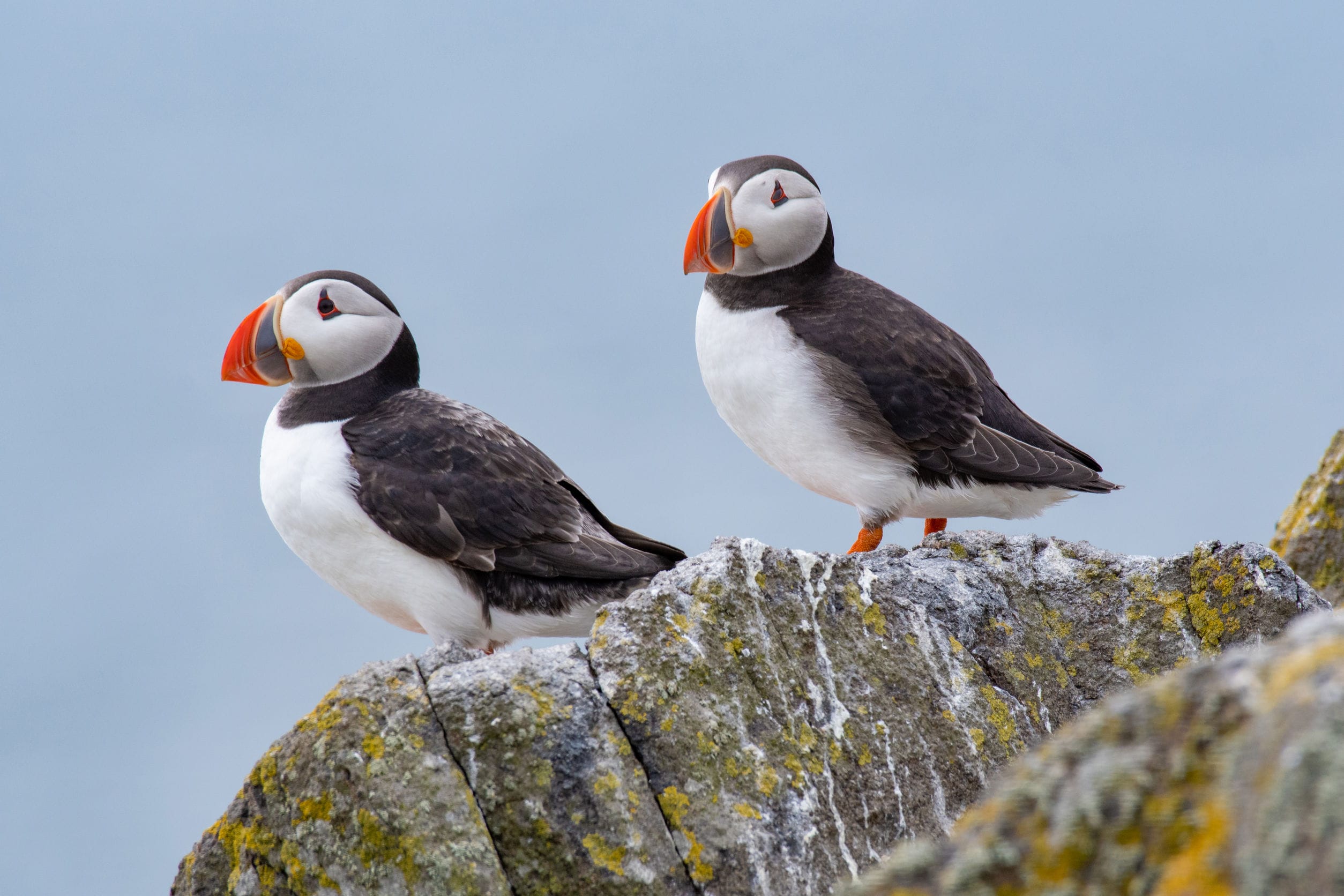
History of the Fife Coastal Path
The Fife Coastal Path has a unique history steeped in prestige and pedigree. When hiking this Scottish trail, you are walking through the “home of golf”. There are many famous golf courses in the area, most noticeably St. Andrews.
This town is also where British royalty are educated. The University of St Andrews was founded in the 15th Century, is the oldest in Scotland and the third oldest English speaking university in the world.
Constructed in the 12th century, St. Andrew’s Cathedral served as the center of religious life and pilgrimage, drawing visitors from far and wide. The cathedral faced periods of prosperity and turmoil throughout its existence, including damage from fires and conflicts. Eventually, in the 16th century, the cathedral fell into ruin. Today, its remnants stand as a majestic testament to its former glory, attracting visitors who marvel at its architectural grandeur and reflect on its significant place in Scottish history.
In the 19th and early 20th centuries, the coastal communities of Fife experienced significant industrial growth, particularly in the mining and fishing industries. This period of industrialization brought changes to the coastline, as harbors, piers, and infrastructure were built to support the booming trade. However, as industries declined in the latter half of the 20th century, the coastal areas faced challenges and transformations.
The path itself is a relatively recent development, officially opening in 2002 as one of Scotland’s Great Trails.
Did you know?
The picturesque village of Crail has a ghostly tale to tell. Legend has it that a bag-piper entered a secret underground passage beneath Crail Castle, vowing to play his bagpipes until the tunnel reached St. Andrews, about ten miles away. Unfortunately, the piper was never seen again. Locals claim that on stormy nights, the haunting sounds of the bagpipes can still be heard echoing through the streets of Crail, a reminder of the piper’s mysterious disappearance. Keep an ear out and let us know if you hear anything on your hike!

Fife Coastal Path Pop Culture
Film and TV
Outlander
Set in 18th Century Scotland, this 2014 series follows the remarkable story of Claire Randall, a strong willed woman who mysteriously finds herself torn between two worlds. Breathtaking landscapes and mesmerising performances make this well worth a watch.

Sea of Souls
A team of parapsychologists investigate supernatural mysteries and explore the human psyche. Running from 2004 to 2007, this BBC series diives deep into the intricacies of the human psyche exploring themes of grief, guilt, and the nature of the soul.

Macbeth
A 2015 adaption of Shakespeare’s timeless tragedy. Starring Michael Fassbender and Marion Cotillard, this film showcases all the beauty Scotland has to offer.

The Decoy Bride
A delightful 2011 romantic comedy follows a Hollywood actress who seeks refuge from the paparazzi by planning a secret wedding on a Scottish island. It’s a heartwarming, lighthearted film starring David Tennant, Kelly McDonald and Alice Eve.

For Those in Peril
A thought provoking drama set in a small Scottish fishing village. The story follows a young man who survives a tragic fishing accident that claimed 5 of his friends, including his brother. Plagued with survivors guilt, a journey of self discovery ensues. Poingnant perfiormances and haunting cinematography make this 2013 film a must watch.

Books
T.F. Franks Crime Novels
T.F. Muir is a Scottish crime novelist, born and raised in the region, and the setting of Fife often plays a significant role in his stories.
Iain Banks
The writer of “The Wasp Factory” a story about a psychopathic teenager living on a remote Scottish island as well as a string of science fiction novels, Banks was named as one of the 50 greatest British writers since 1945 by The Times in 2007. Banks lived on the Fife Coastal Path in Kirkaldy. His bibliography can be accessed here on his website.
The Beacon by Susan Hill:
“The Beacon” is a haunting and atmospheric novel that explores the mysteries of a remote village in Fife. The story follows the inhabitants of the villlage as they grapple with their own secrets, desires, and the enigmatic presence of the lighthouse that gives the book it’s title.
Food and Drink
On the Fife Coastal Path there is not only excellent whisky, the (other) side of physical well-being is also more than taken care of. Along the hiking trail you can stop to eat in hotels, pubs and restaurants, or go shopping in supermarkets. Vegetarians and vegans also get their money’s worth in the restaurants on the Fife Coastal Path.
Walker’s Shortbread
Made in Speyside, another great place to hike, is a true delicacy of Scottish snacks – Walker’s Shortbread. Shortbread is a type of rectangular Scottish shortbread that is exported all over the world. In addition to the biscuits, you can try other delicious pastries such as meringues, oat biscuits and cakes at the factory in Aberlour.

Haggis
When you think of Scottish cuisine, Haggis is probably one of the first things that comes to mind. It is a savoury pudding which is made up of a delicious combination of sheep’s pluck (organ meats), oatmeal, onions, salt, and spices. To some, haggis isn’t often the prettiest of foods, but makes up for it with its palatable taste..

Deep-Fried Mars Bars
Deep-fried Mars bars are a unique dessert that were invented in 1992 by John Davie. The famous chocolate bar is battered with a mixture of flour, eggs, and milk, then deep fried. You can find this delightful snack sold in fish and chip shops (also known as chippers) throughout Scotland.
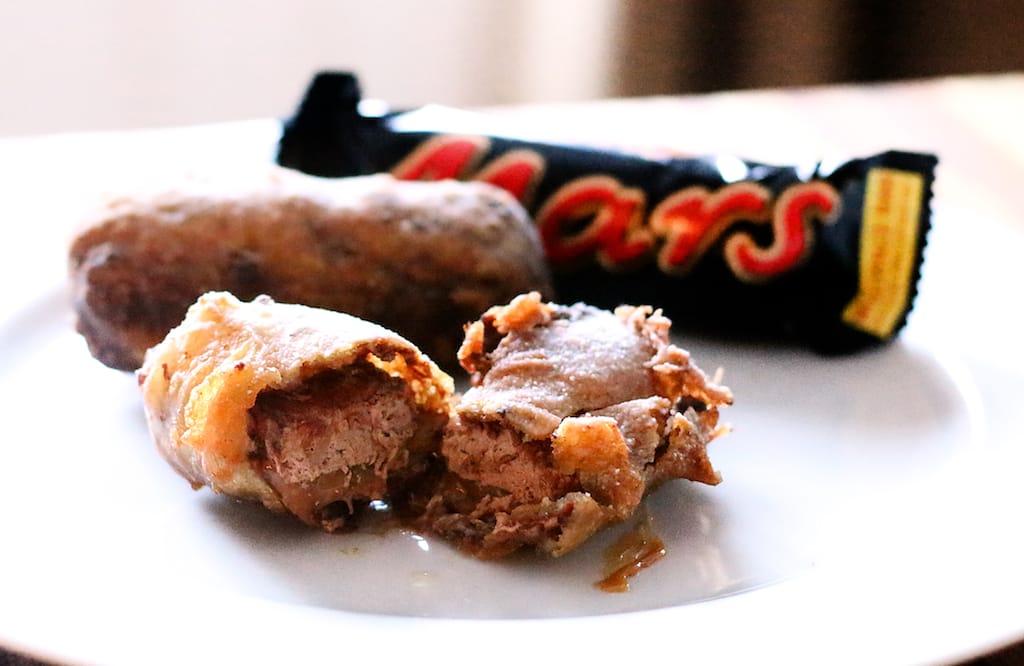
Neeps and Tatties
Often accompanying the national dish of haggis, neeps and tatties are made from root vegetables that have been boiled and mashed into two delicious side dishes. When served alongside Haggis, the meal in its entirety is called a “Burns supper”. Neeps and tatties is just another name for potatoes and turnips.

Cullen Skink
Originating in the northeastern part of Scotland in a small village named Cullen, this creamy smoked fish soup is another traditional Scottish dish. Cullen skink consists of smoked haddock, cream, potatoes, and onions, and is typically served with a side of toasted bread. While it originated as a local specialty of Cullen, you can find this popular soup on Scottish menus nationwide.

Scotch Whisky
It is hard to not mention Scotland without ever thinking of their world-renowned scotch whisky. It can be made from malted barley, wheat and/or rye with every whisky having to be aged in an oak barrel for at least three years. With the first written record of whisky recorded in 1494, there are now around 140 whisky distilleries currently operating in Scotland.

Irn Bru
Often referred to as Scotland’s second national drink, Irn-Bru is an orange-coloured soft carbonated drink that holds a distinctively sweet, tangy taste. It is so popular throughout Scotland that it has long been the best-selling carbonated drink ahead of Coca-Cola and is the third largest selling soft drink across the United Kingdom. The Scots are such fans of this fizzy pop that they even use it to glaze their ham or to make cupcakes!

Drambuie
Drambuie is a Scottish liqueur. It was invented in the 18th Century by John MacKinnon. The name Drambuie is thought to originate from the Scottish Gaelic phrase An Dram Buidheach. This means “the drink that satisfies” or “the satisfying dram”.

Is the Fife Coastal Path Vegan Friendly?
The vegan diet has become more and more popular throughout Europe in recent years, and you will find that there are plenty of vegan options available in most eateries. Each of the accommodation we work with at Hillwalk Tours have given us their guarantee that vegan breakfasts will be catered for once they have been informed. That being said, some of the more rural locations of the trail may have limited options so we advise bringing certain items such as plant-based milk, nut butters or protein powders if you so choose.
In addition, the following apps show restaurants which offer vegetarian and/or vegan opions:
Nearby Trails
There are various other Scottish trails available to you once you have completed Fife Coastal Path. Here are the other Hillwalk Tours Scottish hiking tours we offer:
Fife Coastal Path Tips and FAQs
Probably the most common question asked when walking the Fife Coastal Path or planning any hiking holiday is – what will I pack?
Once you have fully booked your Hillwalk Tours hiking holiday, you will receive a detailed ‘recommended equipment’ list inside your walking pack. For those of you who are still unsure, here are some of things we advise you bring along with you on the Fife Coastal Path.:
– Waterproof Clothes
– Fleece and other warm clothing
– Base Layer
– Light and comfortable trousers
– Wicking Socks
– Suitable Hiking Boots
– Backpack/Rucksack
– Hat and Gloves
– First Aid Kit & Foil Blanket
– Whistle & Torch
– Insect Repellent & Midge Net
– Mobile Phone
– Plug Adapter/Converter
For more on what to pack – check out these packing musts.
If you are thinking of bringing your four-legged friend with you, it is important to note various situations. It is advised that dogs are always kept on a short lead and close to their owners. While walking along the Fife Coastal Path, there are certain periods where you may cross or come close to farmland areas. Dogs are not welcome in fields with livestock or vegetable. Realistically, it may be more hassle than it is worth, and it might also distract you from taking in the spectacular views and remaining in the present moment.
In addition, due to most of the accommodations we work with not accepting pets of any kind, it is not possible to bring any pets, such as your dog, on a Hillwalk Tours hiking holiday.
The Fife Coastal Path is generally considered safe by hikers, but it’s always important to take necessary precautions when embarking on any outdoor adventures. Stay on designated paths, be aware of tides and coastal conditions, carry a phone, and most of all use common sense and you will be ok!
If you experience any difficulty or an emergency of any level, it is advised that you phone the relative emergency services on 999 or 112. It is also important to note that mobile/cell phones can call this number with or without mobile/cell phone reception.
For those who have fully booked their Hillwalk Tours hiking holiday on the Fife Coastal Path we provide 24/7 on-call support to all of our customers and you will also receive a detailed description on how to remain safe on your hike.
The hike is great for solo hikers who want to get away from it all! But in addition to the previous points some additional precautions can’t hurt! Stay visible, make sure and inform someone you are going, stay visible, and trust your instincts.
Generally, our tours take place between the months of March to October to hopefully allow for good, dry weather and longer days of daylight while you carry out your tour. This will hopefully ensure that you enjoy your hiking experience with us to the fullest. You can also check out the individual tour page for the Fife Coastal Path Tour on our website.
Our 7-Day tours include 6 nights of accommodation – specifically the first 6 nights on your hiking tour. Your tour finishes on the seventh day when you check out of your last accommodation. These 7-Day tours include 5 days of hiking. The first and last days of all our hiking tours are travel days used to transfer to/from the town where your hike will begin/end. If you would like to hike for 7 days, simply select one of our 9-Day tours.
Once final payment for your tour has been received, you will be sent an email with a digital PDF copy of your hiking pack documents such as your route notes, accommodation details and evening meal suggestions etc. You will also be posted a hiking pack (either to your home address or first accommodation on your tour) which will include essential physical items for your tour such as the required maps for the trail and luggage tags*.
*If you’d prefer to receive a physical copy of your full hiking pack documents too, it’s essential that you reply by email within 48 hours of booking your tour in order to let us know.
A breakdown of the documents and items you can expect to find in your hiking pack are as follows;
– Route notes (prepared by a member the Hillwalk Tours team who has walked every step of your tour)
– Detailed hiking map(s)
– A high-quality waterproof map-case
– Full details of your accommodations and where you will be staying
– Our tips on the most interesting attractions to visit along the trail
– A look at fascinating local history
– A guide to the best places to eat and drink
– Safety information, emergency contact details & the country code for walkers
Fife Coastal Path Image Gallery
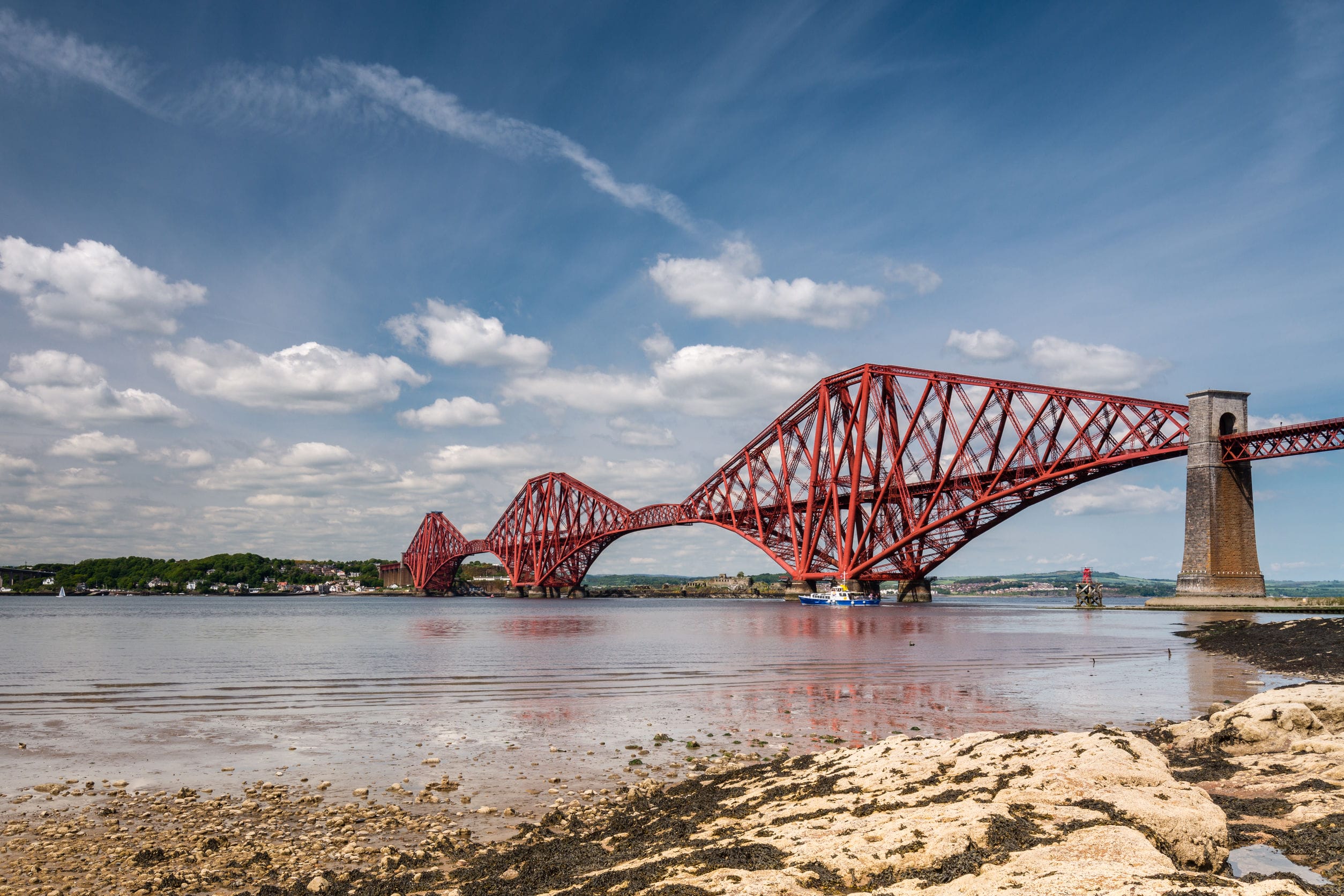
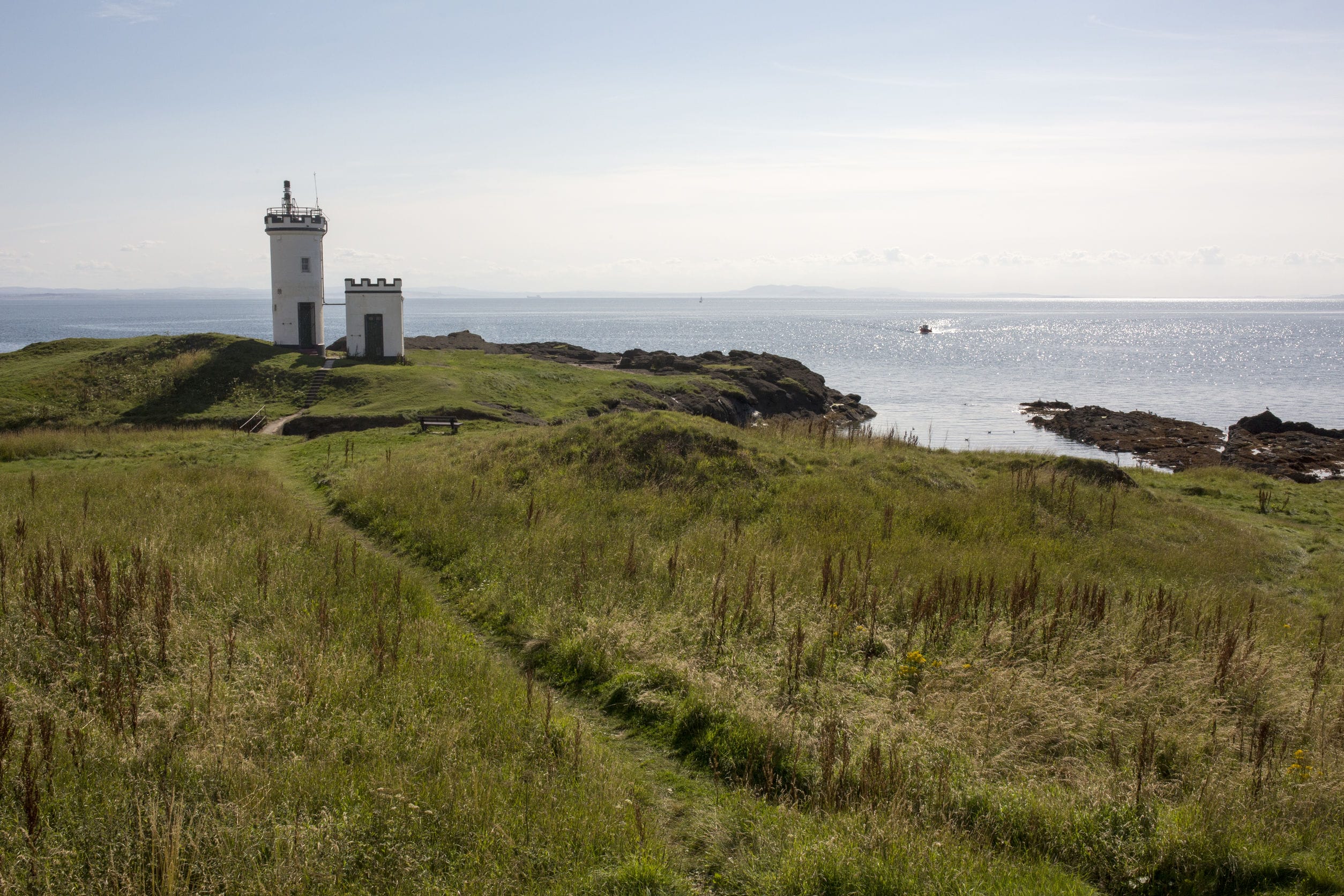

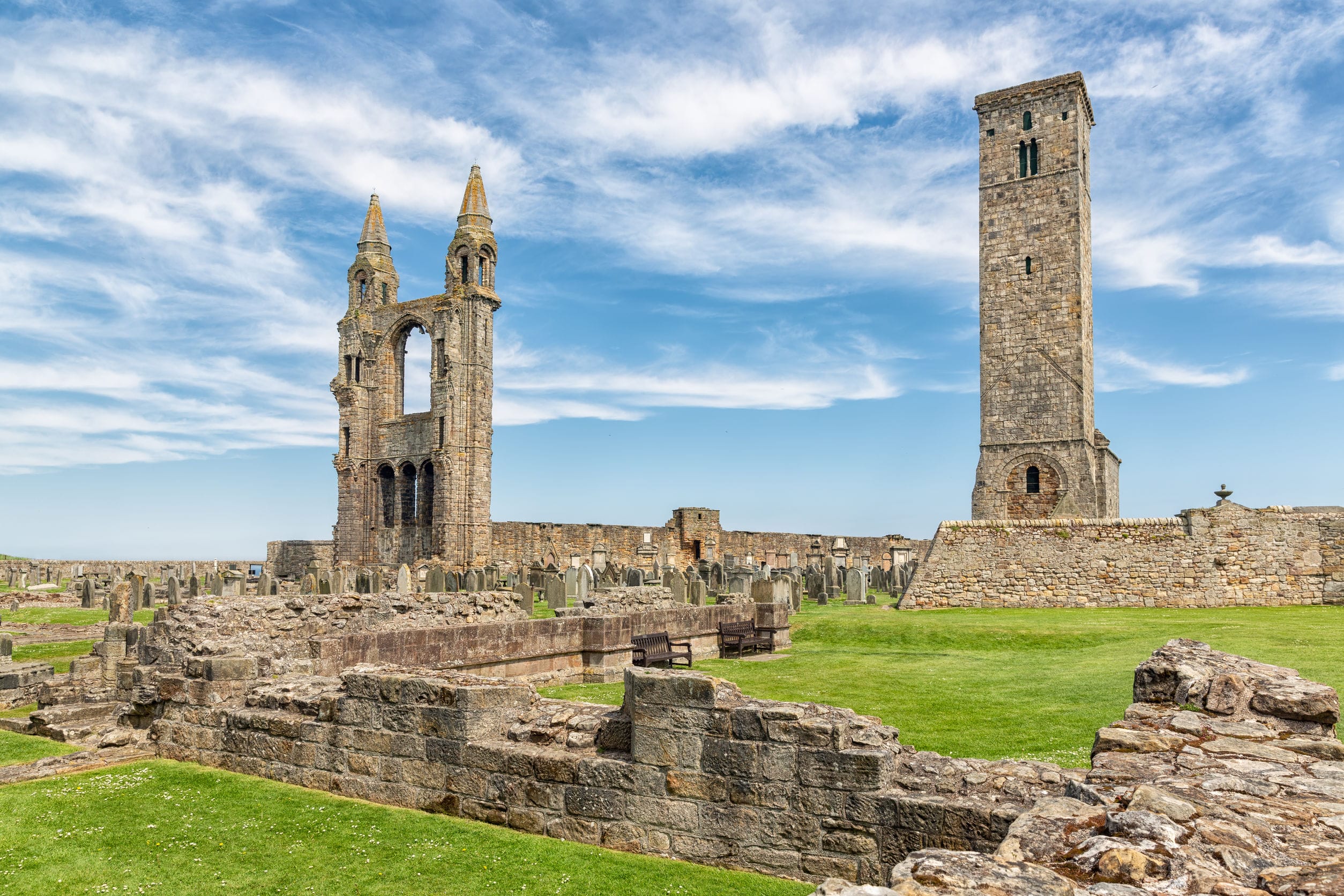
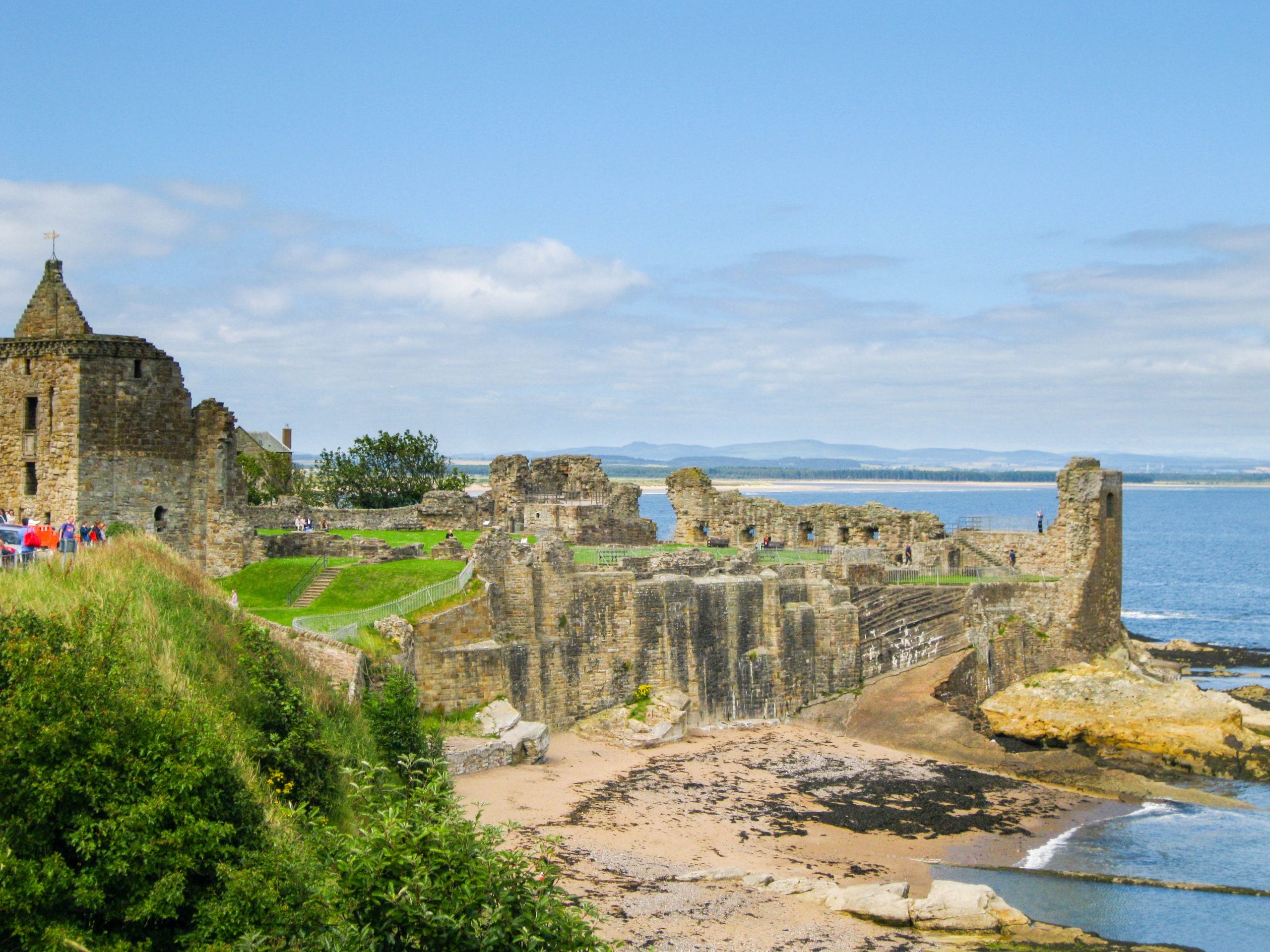

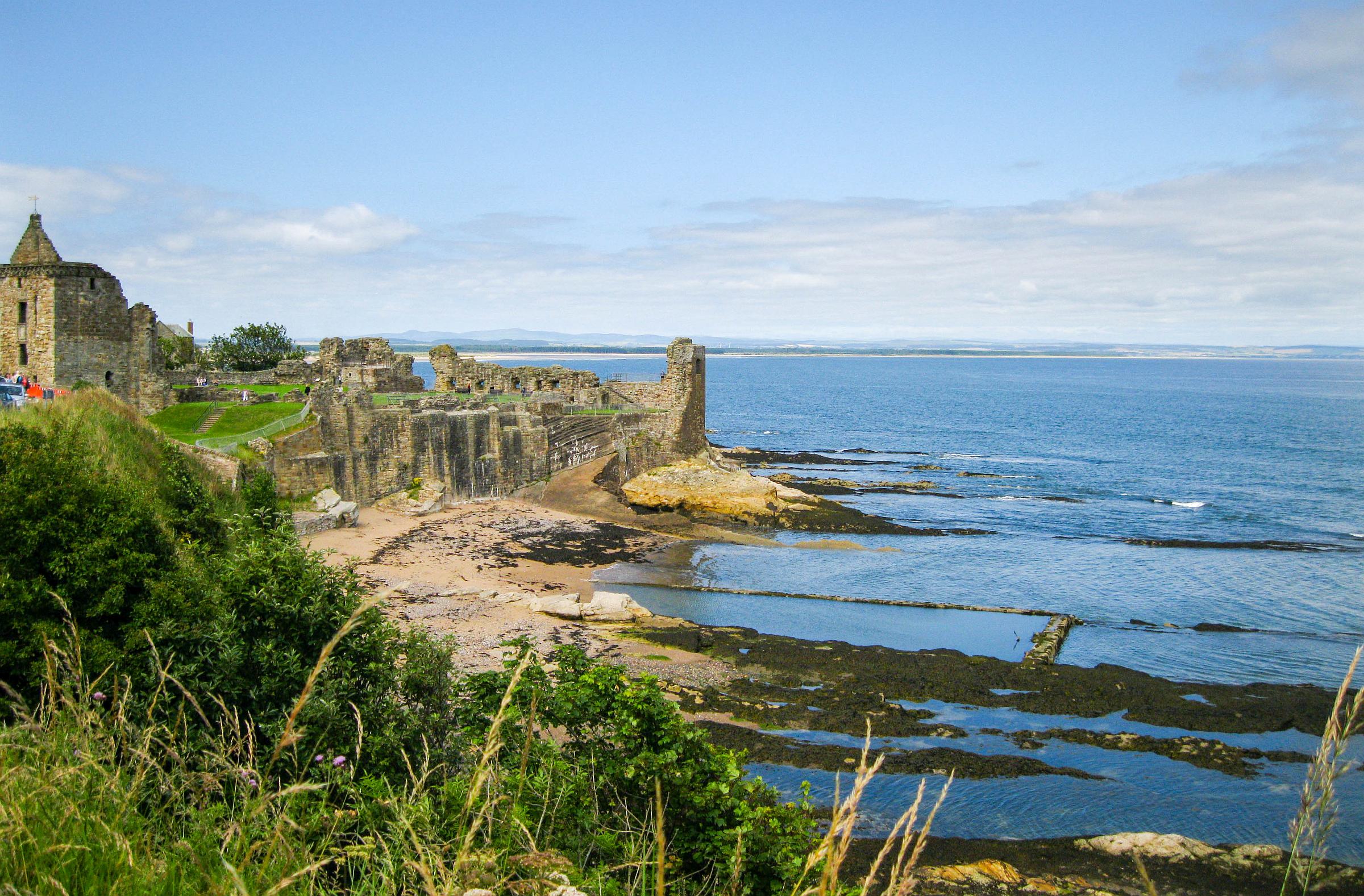
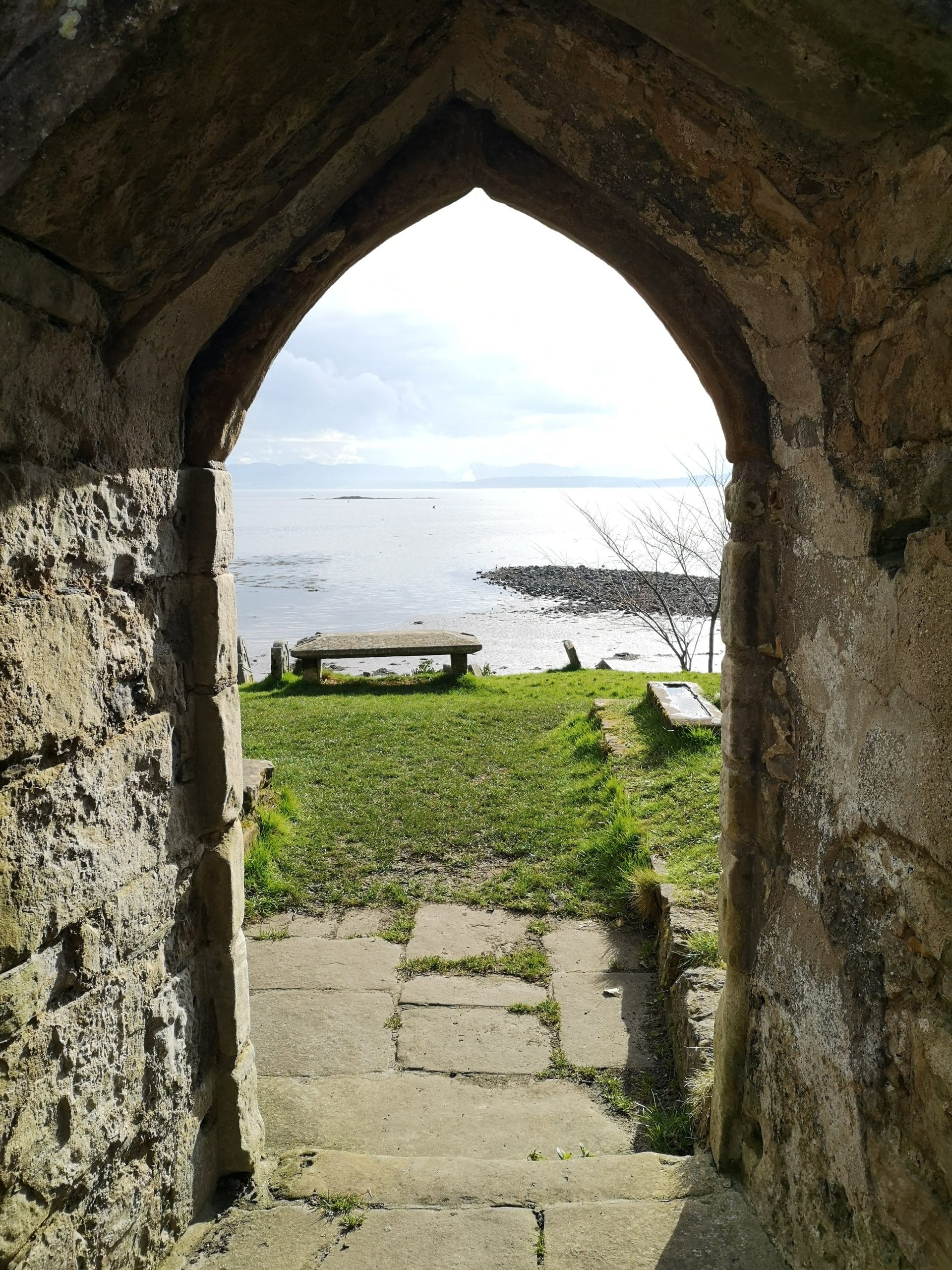

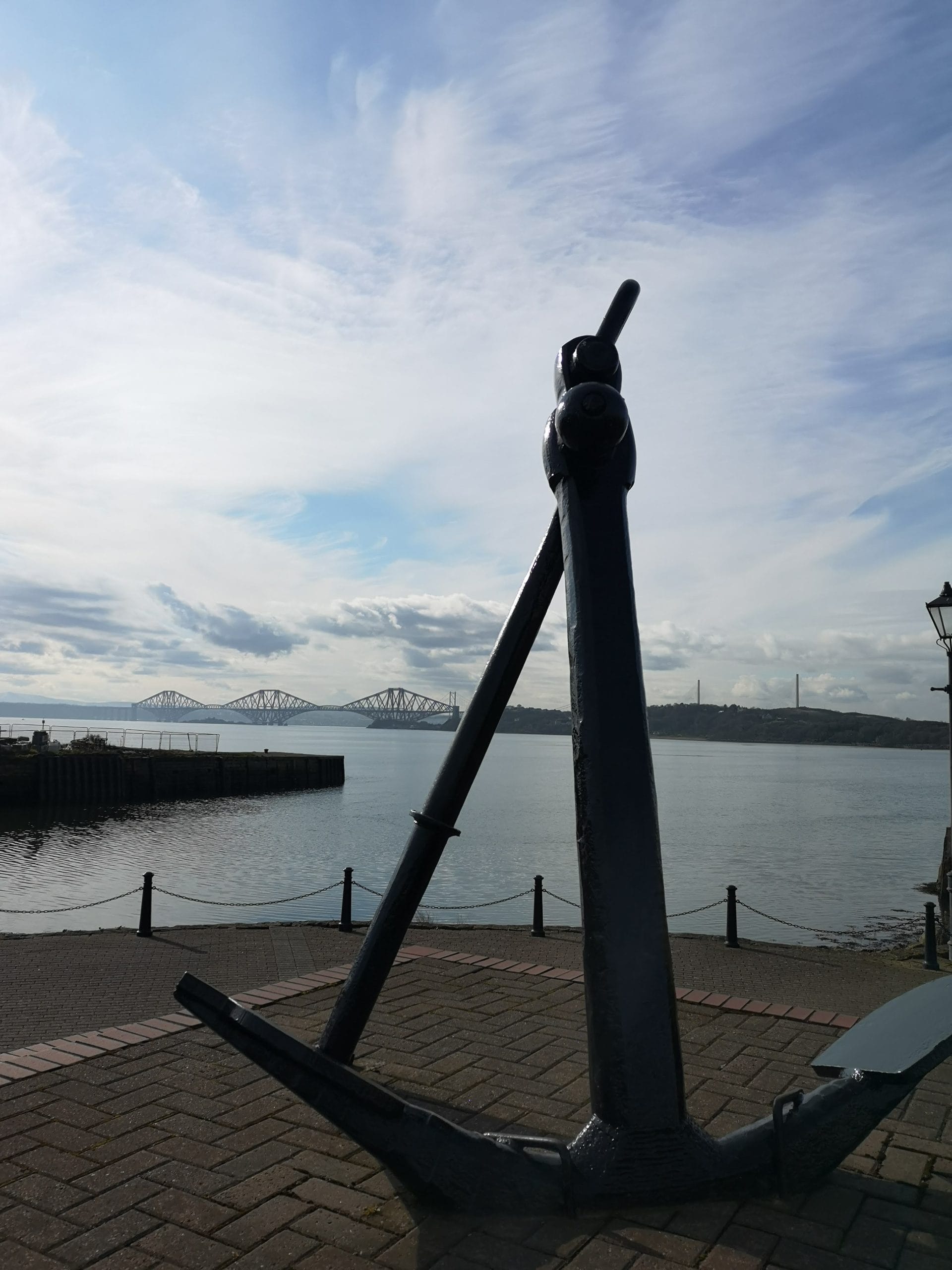
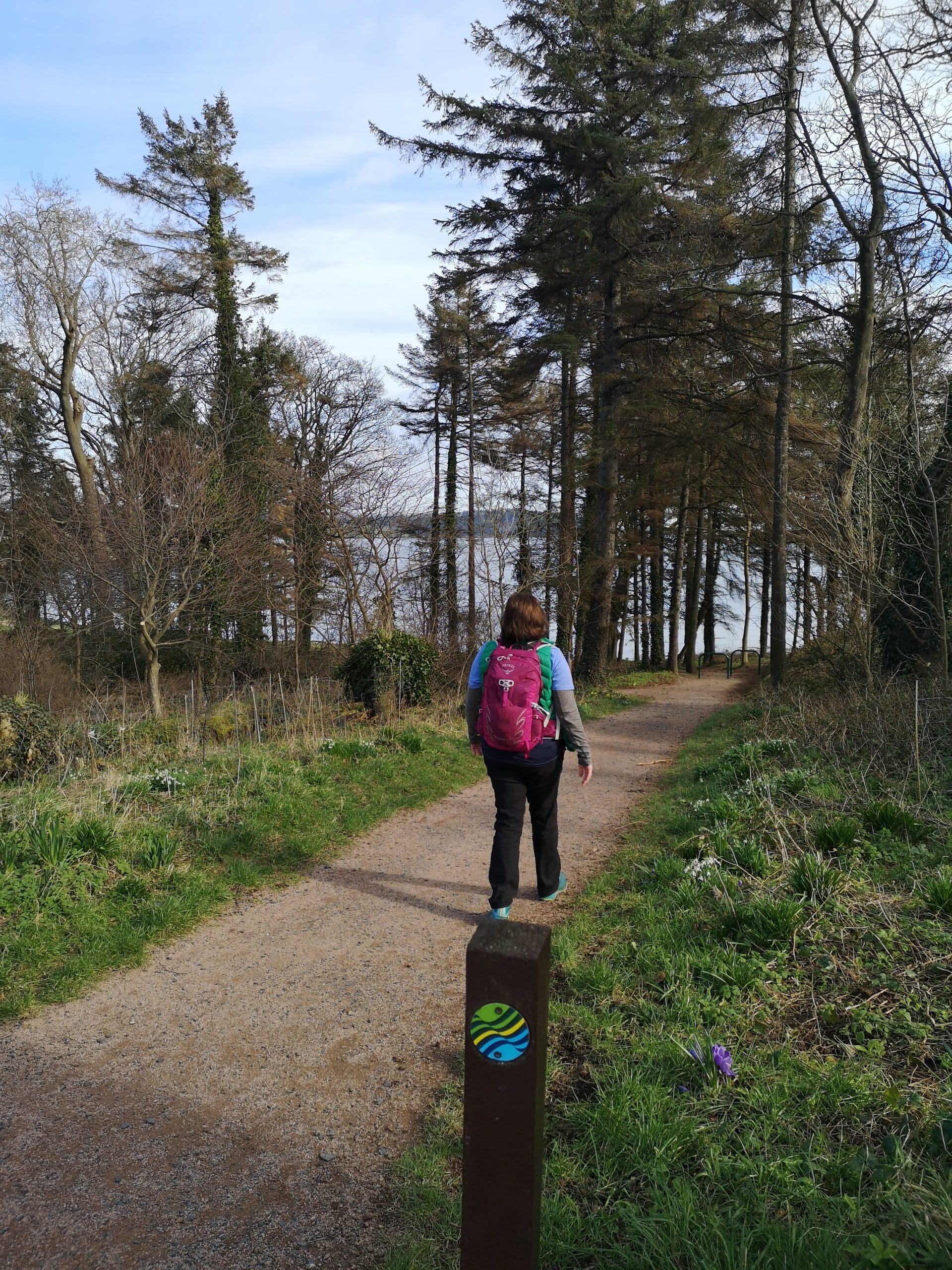

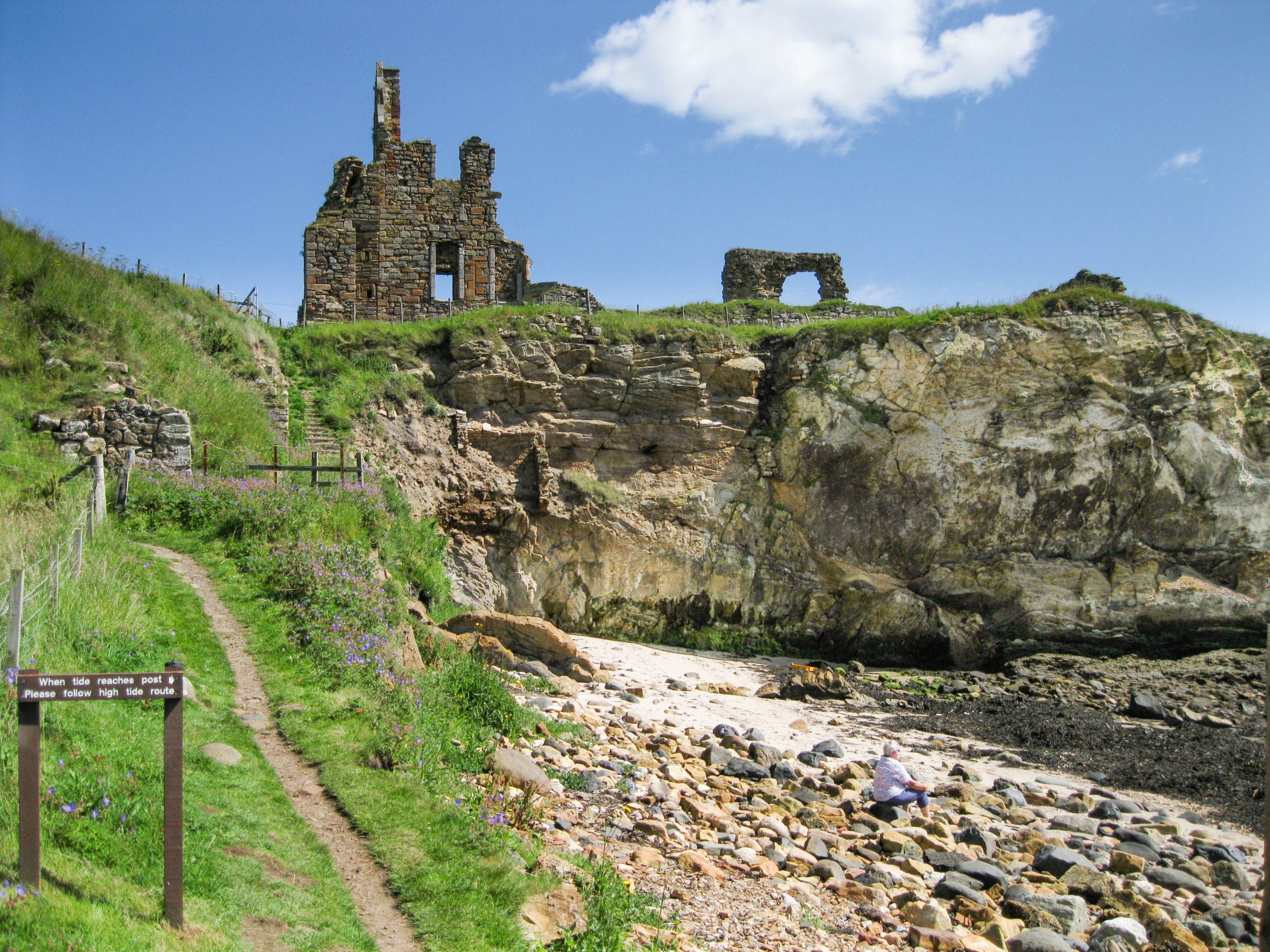
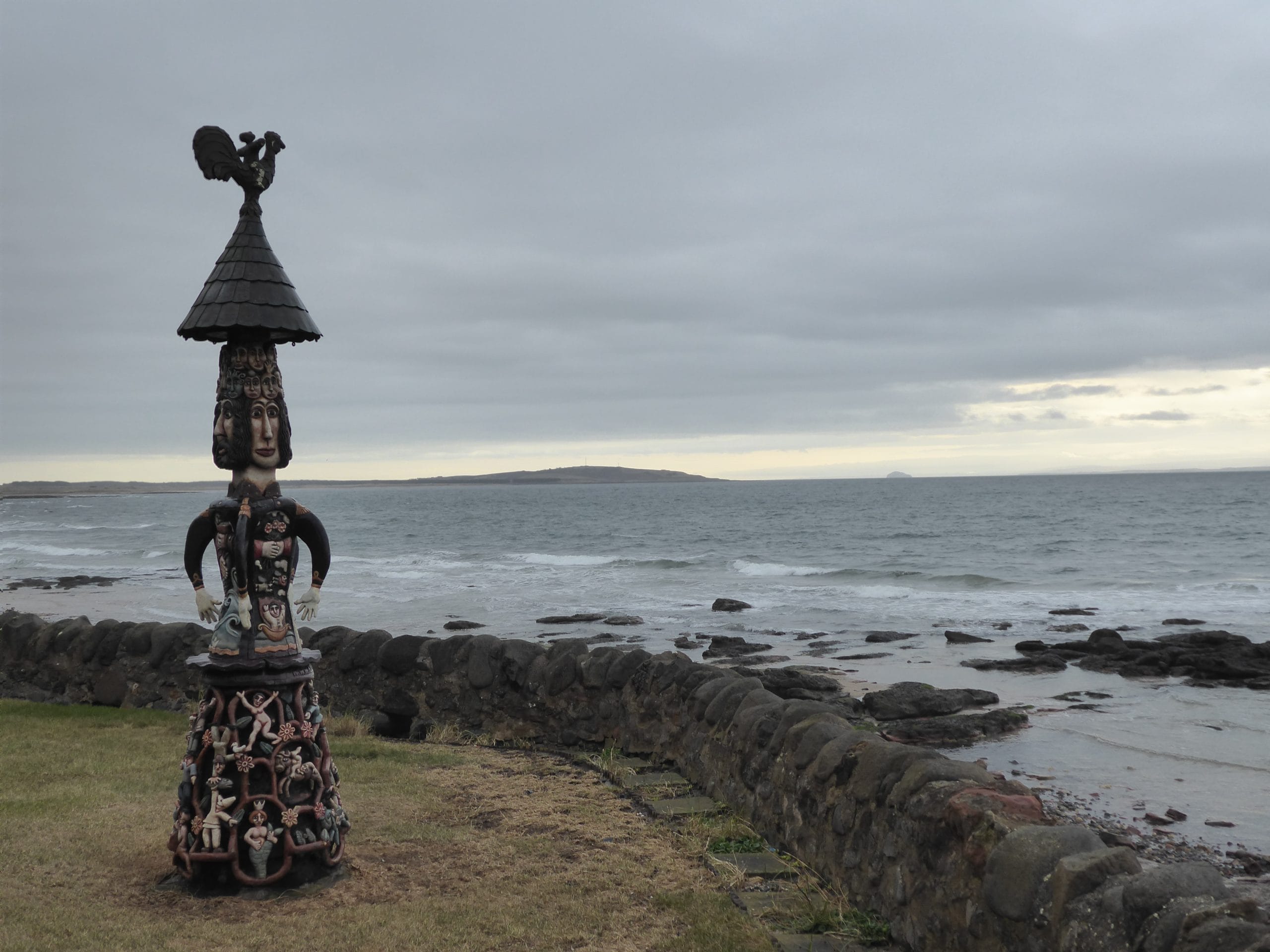
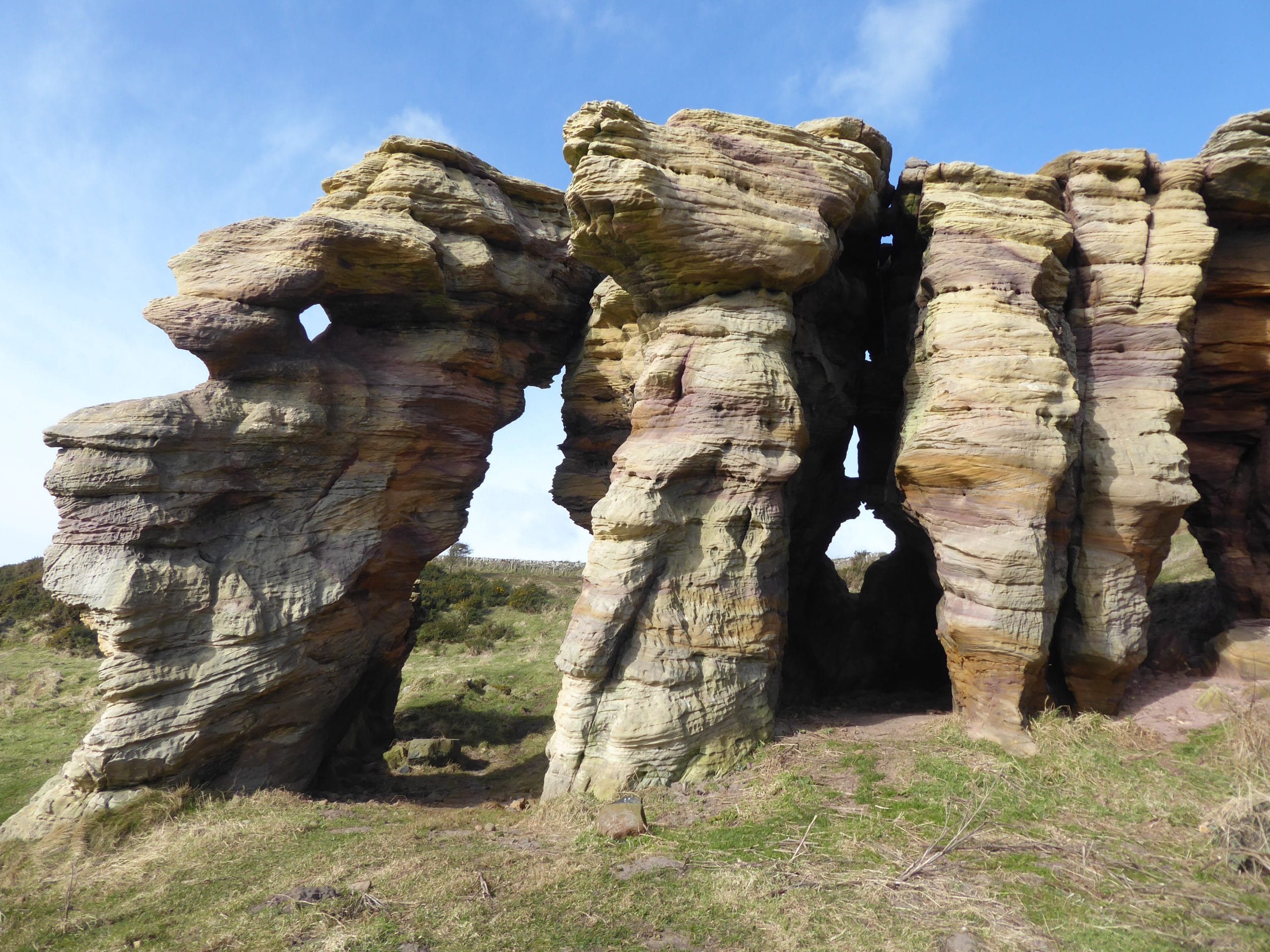
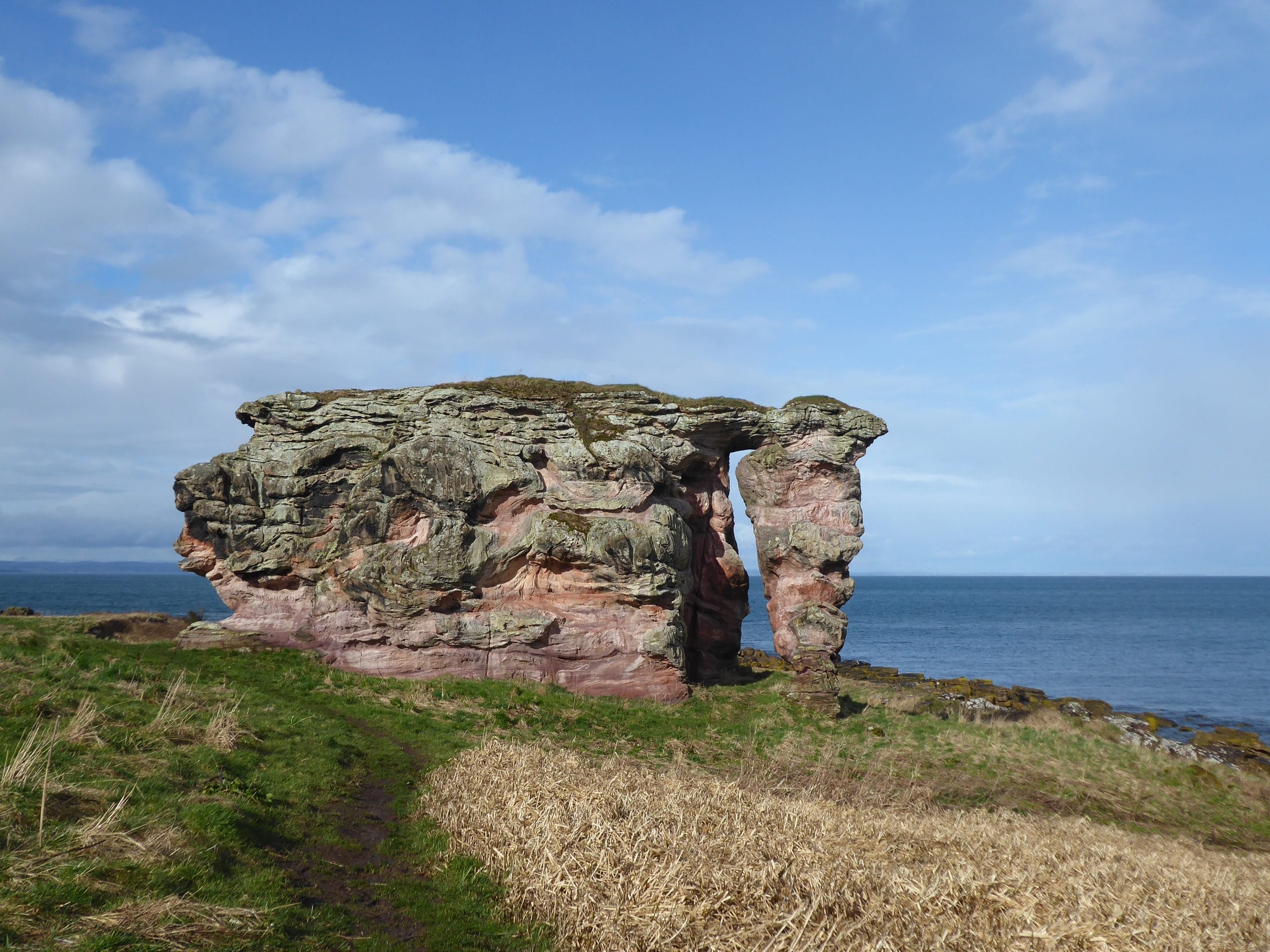


Hillwalk Tours
About Us
Hillwalk Tours is an award-winning walking tour operator which specialise in self-guided walking holidays in Ireland, Scotland, England, Wales and along the Camino de Santiago in Spain. Our goal is to create happy experiences for all of our customers, suppliers & staff.
Fill out the form below with any questions you may have and we will get back to you promptly.
Follow us on our social media platforms
Leave No Trace
We like to walk in nature and since you are reading this – we believe you do too! It is important to ensure that our impact on the environment is limited so that hikers can enjoy the same view after us. The rule applies: when you leave, make sure that nature looks the same as when you arrived or simply put “leave no trace.” As more and more people take to the great outdoors, our collective mark on the environment increases.
What does this mean in reality? Of course, do not leave any rubbish or waste behind. Do not collect stones, flowers, or other “souvenirs”. Don’t carve your name on a tree or break branches… I think you get the drift. It is imperative for walkers to play their part in making sure litter, damage to vegetation and all forms of pollution are limited.
Noise can also be a form of pollution. Whoever walks through a forest talking and laughing loudly, for example, ruins the peace and quiet of other walkers, who can no longer hear the birds. The same goes for cell phones that suddenly start ringing. Keep the volume down and respect your surroundings. Ultimately, the point is to ensure that as many people as possible can enjoy walking through nature. So that applies to you, but also to those who tread the path after you.
Hillwalk Tours proudly supports sustainable tourism and loves the countryside as it is – wild, peaceful and clean. We are proud to support the “Leave No Trace” initiative that aims to preserve the natural beauty of each nations countryside where we offer hiking holidays. We try to create happy experiences for our accommodation too, and the restaurants, shops and taxi companies that serve our walkers. These are often small businesses located in isolated areas that have been left behind by urban migration and a lack of investment in rural regions. Their warm hospitality and friendly welcomes epitomise the magic of a Hillwalk Tour and we’re dedicated to helping keep these rural communities alive.
The Benefits of Hiking
In recent years, walking and hiking outdoors has been widely reported to have numerous physical and mental health benefits. The following are examples of some of these benefits:
Improve strength and fitness
- Weight loss
- Muscle gain
- Improve metabolism
- Improve digestion
- Better quality sleep
- Increase in Vitamin D
- Improve discipline
- Sense of achievement
- Living in the present moment
Hiking Equipment List
For a more in-depth list of recommended hiking equipment list, click here.


